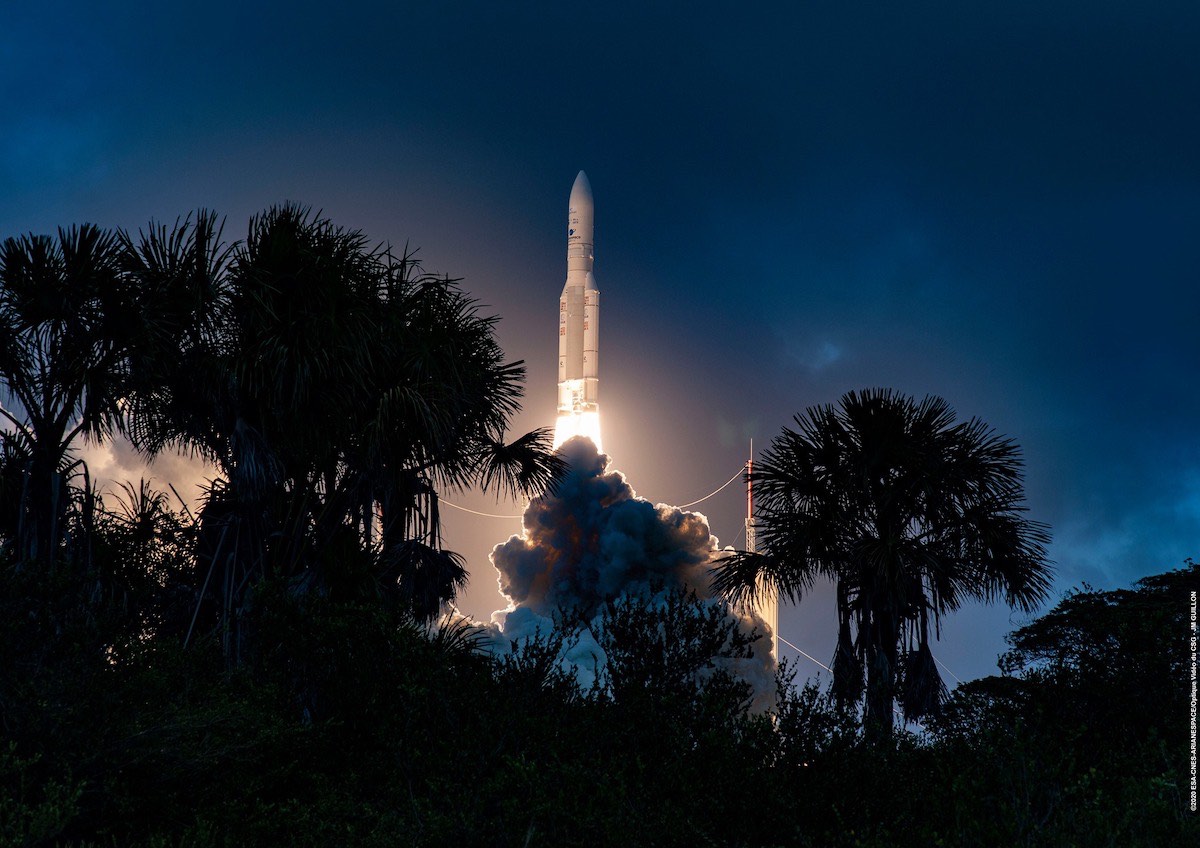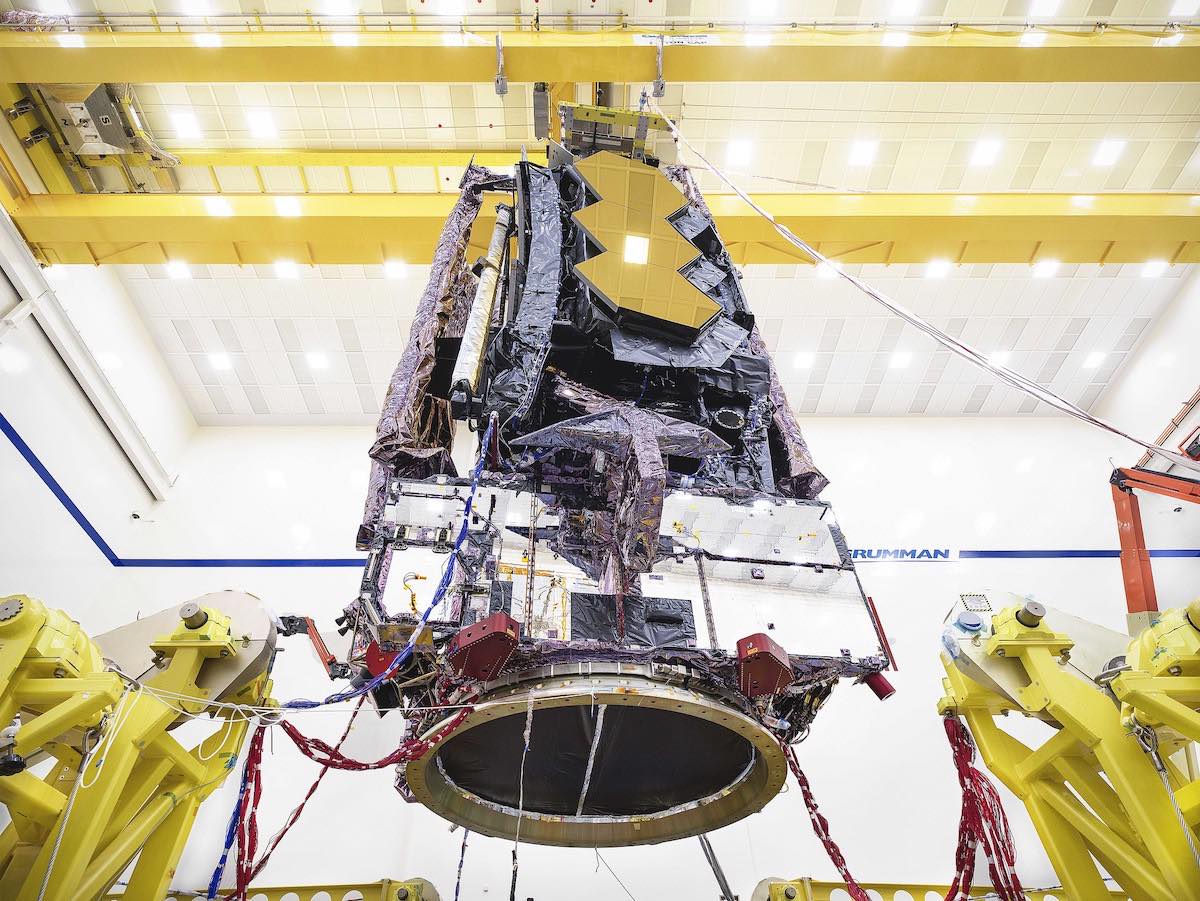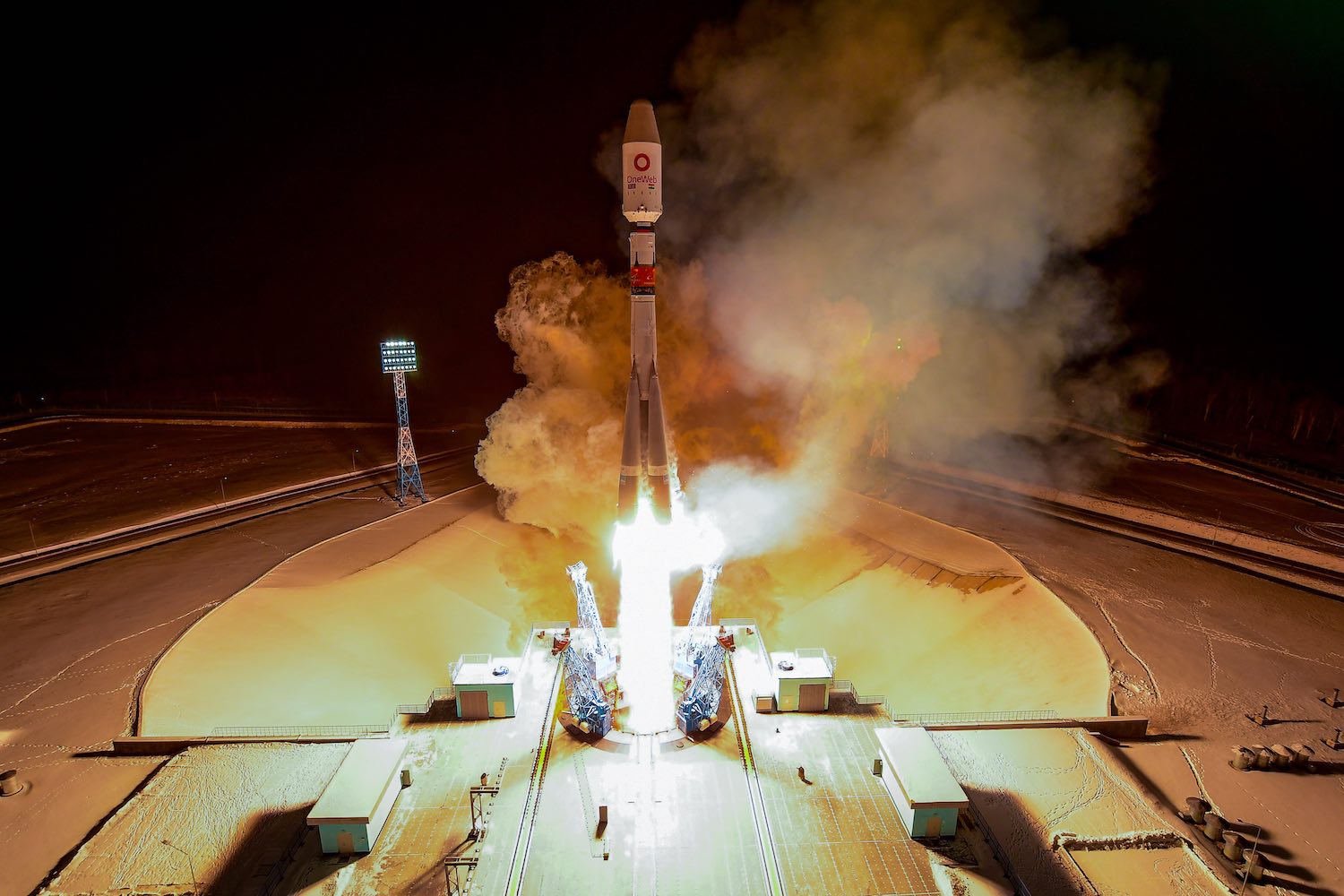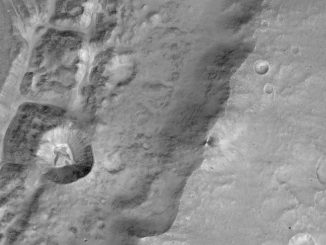
The planned Halloween launch of the James Webb Space Telescope — one of eight Ariane 5 launches left before the rocket’s retirement — and a series of flights to build out OneWeb’s satellite internet network highlight Arianespace’s schedule this year.
Arianespace says it has between 10 and 20 missions planned in 2021, with the final number hinging on the availability of satellites in the company’s backlog.
Stéphane Israël, CEO of Arianespace, said Jan. 7 that the French launch services company is in position to launch more than once per month in 2021, exceeding the 10 missions Arianespace performed in 2020, when the coronavirus pandemic and the bankruptcy of its largest commercial customer temporarily roadblocked the launch schedule.
“If the satellites are available, we are very confident that we will launch much more in 2021,” Israël said.
“In 2021, we will have four launchers at our disposal — Ariane 5, Vega, the maiden flight of Vega C, and Soyuz from three different spaceports — CSG (the Guiana Space Center), Baikonur, and Vostochny,” Israël said in a press conference Jan. 7 previewing the Arianespace’s 2021 launch schedule.
Arianespace said last January that it could fly up to 22 missions in 2020, mainly for OneWeb, which is building a constellation of 650 broadband internet satellites in low Earth orbit. Those plans did not fully materialize after OneWeb declared bankruptcy in March, around the same time that the coronavirus pandemic forced Arianespace to suspend launch operations in French Guiana.
Launches in French Guiana resumed in August, and OneWeb emerged from bankruptcy in late 2020 under new ownership by the UK government and Bharti Global. OneWeb launches resumed Dec. 18 with the launch of 36 more internet satellites on a Soyuz rocket from the Vostochny Cosmodrome in Russia, a mission contracted and managed by Arianespace.
Israël said Soyuz rockets could be ready to launch satellites OneWeb at a pace of once per month in 2021, depending on the rate of satellite production at OneWeb’s factory in Florida. Arianespace has 15 more Soyuz missions booked for OneWeb through 2022 — from Vostochny, the Baikonur Cosmodrome, and Vostochny — on top of the four OneWeb launches already completed.
“I’m not sure we will have to deliver as much as that for OneWeb, but we are ready to deliver one Soyuz per month for OneWeb if the satellites are available,” Israël said.
While the OneWeb satellites will take the bulk of Arianespace’s missions in 2021, the company says it is laser-focused on the launch of the $10 billion James Webb Space Telescope aboard a heavy-lift Ariane 5 rocket in October.
JWST is a joint project between NASA, the European Space Agency, and the Canadian Space Agency. One of ESA’s responsibilities in the partnership is to provide the launch for the observatory. ESA selected Arianespace for the job.
“Then we should have a very iconic mission, the very famous James Webb Space Telescope,” Israël said. “I really want to thank ESA and NASA for their trust.
“This mission will be the mission of 2021,” he said. “The first contact we had with ESA and NASA on this project was in 2002, so 18 years ago. This telescope will be 100 times more powerful than (any other space telescope). It will embark on a dedicated Ariane 5. The first equipment for the campaign will arrive at CSG six months before the launch.
“The satellite itself, which will be 6.6 tonnes, will arrive by boat eight weeks before the launch,” Israël said. “You can be sure that the James Webb story will mobilize us very strongly next year with our Ariane 5 vehicle.”

The Ariane 5 rocket for the launch of JWST will fly with modified pressure vents on its payload fairing, designed to reduce the risk of a sudden pressure change that could damage the observatory’s sunshield when the shroud jettisons after reaching space. The most recent Ariane 5 launch in August tested the new vent ports to ensure they meet stringent requirements for the launch of the Webb telescope.
“We have worked with ESA and NASA on the overall reliability of Ariane 5, so yes, I can confirm that NASA has been a very demanding and strong customer for this mission,” Israël said. “This is perfectly normal. It has been done in parallel with ESA because our customer is ESA.
“But we are working also directly with NASA in preparation for the mission, but also to give all the evidence for the robustness of Ariane 5,” he said. “So … we have made some some additional work here, and due to the value of the James Webb Space Telescope, it’s more than normal.”
Israël said indications from NASA and ESA are that it’s “more than feasible” for JWST, which has been delayed years by development and testing delays, to be ready for launch by Oct. 31.
The fully-assembled observatory is currently undergoing final testing at a Northrop Grumman facility in Southern California before shipment by boat to French Guiana later this year.
JWST will launch with its solar arrays, sunshield, multi-segmented telescope, and other appendages folded up to fit inside the Ariane 5, which has one of the largest payload shrouds of any operational rocket.
Once in space, the observatory will begin unfurling its solar arrays, antennas, and telescope components during a cruise to the L2 Lagrange point, a gravitationally-stable position about a million miles, or 1.5 million kilometers, from the night side of Earth.
JWST’s four science instruments will peer into the distant universe, studying the turbulent aftermath of the Big Bang, the formation of galaxies, and the environments of planets around other stars.
Arianespace has more missions planned in 2021 besides the OneWeb launches and JWST.
Including JWST, Arianespace has at least three Ariane 5 flights planned in 2021, and a fourth mission could be launched at the end of the year, depending on satellite availability, Israël said.
There’s also a Soyuz launch from French Guiana planned to carry two European Galileo navigation satellites into orbit, and up to four flights of the Italian-developed light-class Vega launcher are scheduled for 2021, including the debut of a new upgraded variant named the Vega C.
Two of the Vega rockets will launch with the first two high-resolution Pléiades Neo Earth-imaging satellites for Airbus. The first satellite for the French military’s CERES signals intelligence satellite will also launch on a Vega mission in 2021, according to Israël.
“It will really depend, at the end of the day, on customer availability,” Israël said. “The only thing I can say with a reasonable level of confidence is that we shall launch more than last year.”

Here’s a breakdown of the missions on Arianespace’s schedule in 2021, based on Israël’s comments and information from ESA:
- Feb. 25: Soyuz/OneWeb 5 from Vostochny Cosmodrome, Russia
- March 4: Ariane 5/Star One D2 and Eutelsat Quantum from Kourou, French Guiana
- Late March: Vega/Pléiades Neo 1 from Kourou, French Guiana
- Mid-2021: Soyuz/Galileo 27 and 28 from Sinnamary, French Guiana
- Mid-2021: Vega C inaugural flight from Kourou, French Guiana
- Oct. 31: Ariane 5/JWST from Kourou, French Guiana
- TBD: Ariane 5/SES 17 and Syracuse 4A from Kourou, French Guiana
- TBD: Vega/Pléiades Neo 2 from Kourou, French Guiana
- TBD: Multiple additional Soyuz/OneWeb missions from French Guiana, Baikonur, and Vostochny
Email the author.
Follow Stephen Clark on Twitter: @StephenClark1.



